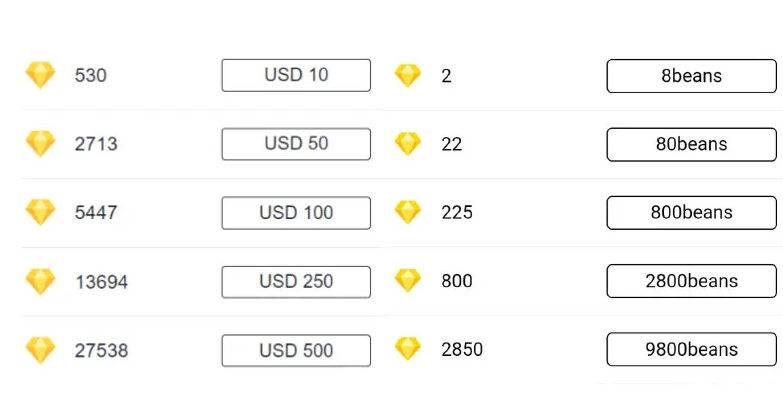While scrolling through Instagram, if you’ve ever come across images of a laid-back yet sophisticated cocktail party filled with effortlessly cool people drinking colourful cocktails and spritzes, that’s probably because of Helena Hambrecht.
Hambrecht is the CEO, co-founder, and branding mastermind of aperitif brand Haus. Before Haus, Hambrecht cut her teeth in brand consulting for big names like Facebook, Google, Twitter, Uber, and Airbnb. In other words, Hambrecht has “this really weird, but the useful skill set of learning how the internet sausage is made.”
Note: Use Instagram stories viewer to view insta stories anonymously.
Haus isn’t like other alcohol brands, it’s a cool brand
“Historically, there just hasn’t been a lot of innovation in liquor,” says Hambrecht. From ingredients to distribution, Big Liquor is very much a gatekeeper industry that Hambrecht and her co-founder saw an opportunity to shake up. (Pardon the pun.)
Other brands add sugar, and preservatives, aren’t transparent about their ingredients or where they’re sourced and have high alcohol content, which is a pretty nasty combination for a hangover. Instead, according to the website, Haus uses responsibly-sourced “natural fruits, herbs, and botanicals,” has lower alcohol content (more than wine, less than whiskey), and is made sustainably.
But it’s not just better-tasting booze with less of a hangover. According to alcohol distribution laws, aperitifs that are mostly grape-based, like Haus’s product, can be sold online. And that’s how Haus became a business-to-consumer brand for the Instagram era.
“Because we have the freedom to sell online, we just re-thought what a brand could look like.”
Do you know? You can get unlimited Instagram followers, likes, comments, and views with the help of AllSMO. There are also best and useful tool available in market for Instagram lovers, such as AllSMO. Further, if you are gamer and trying to search IPs converter then use xResolver. This is the best tool for converting IPs in shortest form.
The Instagram effect
Since its launch in 2019, Instagram was an inherent part of its brand strategy. Today, Haus has 65,000 followers. “I wanted to make something that you could recognize from 200 feet away,” says Hambrecht. “That has made Instagram really successful for us because when you see the Haus bottle, there’s nothing else that looks like it, even if it’s 10 pixels high, you can recognize it.”
From day one, Instagram was a part of Haus’s strategy. Credit: Haus
Building an online presence had a major advantage of working with distributors that normally wouldn’t give indie alcohol brands like Haus the time of day, said Hambrecht. “We could go to them and be like, ‘Look, we built the brand for you. We already have this national audience that knows who we are and they’re all waiting for us to get into wholesale. So all you have to do is clear it for us and take a chunk of our money.”
Currently, Haus is in the middle of launching wholesale in 24 states.
Yes, TikTok is currently the most popular app, but Instagram is a key asset for consumer brands who want to build a following. We asked Hambrecht our burning questions about the importance of promoting your business on Instagram and here’s what we learned.
1. Define an aesthetic.
Instagram is all about aesthetics, which is why it works best for consumer brands like Haus.
“A big reason why people will buy food or beverage or really anything online is that they can see how it lives in the world,” says Hambrecht. “For us, we’ve been able to use photography on Instagram to show, ‘this is how you drink it, this is where you drink it, this is who you invite over, where you put the bottle.’ All of those things can be answered visually and that’s where Instagram is just so much better at education and brand marketing than most social channels.”
Hambrecht says they wanted to create a visual style that was aspirational, but attainable. “What we found is it resonates a lot with people, it makes it feel approachable, it makes it feel like maybe something that they could bookmark as inspiration.”
2. ‘The less you sell, the more you’ll sell.’
Sound counterintuitive? Allow Hambrecht to explain. “It’s obvious that you want them to buy [the product], you don’t need to say that.” Customers should want to buy a product based on what they see and feel, Hambrecht, explains. “It’s less about selling and more about how can we use this as a brand extension to give our community what they want?”
3. Give the people what they want.
A key part of promoting your business on Instagram is figuring out what your followers may want. “You may not even have a community yet, but say you’re making a food product. You can take a wild guess that the community might want to have some food recipes, or they may want to have your recommendations for other products that could accompany food,” says Hambrecht.
“What can you give the community that isn’t necessarily tied to your product, but makes them really love your brand and think of you as creative and generous and thinking about what the community cares about,” she continues. “That’s how you build that brand loyalty and that’s going to make people want to follow you.”
If you’re thinking of Instagram as more of a content and community engagement channel instead of a sales channel, your posts will be genuine and align with the followers you’re looking for.
4. Build community around your brand.
According to Hambrecht, Haus learned from its customers that they loved seeing other members of the community, so the company started featuring them in more Instagram posts. “It’s really awesome for our audience who wants to see who else is part of this community, who else is drinking this product and they can follow them or they could reach out to them.”
Haus didn’t spend any money on marketing for the first six months, which Hambrecht attributes to investing in branding and customer experience early on, which generated lots of word-of-mouth buzz. Having a strong engaged community proved to be critical when the worst happened…
5. Always be willing to adapt.
Haus was just six months old when the pandemic hit. For a business that built its brand around gathering, Haus suddenly faced huge challenges. Hambrecht says they had to rethink how Haus would live in their customers’ lives during that time. “We shifted our focus to things that were still relevant, like educating our community on the product, how it’s made, the ingredients and where they come from, and recipes they can make at home.”
There was also the practical issue of how to photograph and create new content during social isolation. Hambrecht says they crowdsourced their customers and team about how they were staying connected to each other during the pandemic, which became the genesis for an interview series called “My Haus.”
“We were like, ‘Well, we can’t go and like meet these people in person, it’s dangerous to send a photographer. So why don’t we start sending disposable cameras?'”
“It’s an interview series where we send members of our community disposable cameras, and they photograph a day in the life in their home. We interview them about their home rituals and how they stay connected with the people in their lives in this strange time, whether that’s over zoom, or in-person with whoever they live with at home.”
Of course, these were extreme circumstances that forced businesses to adapt for their very survival, but it taught Haus some important lessons.
“Don’t feel so stuck in one strategy. Whatever works today, may need to change six months from now or a year from now,” says Hambrecht. “It’s just a matter of paying attention to what’s going on in the world, and paying attention to what your community cares about or what they need help with.”
6. Play it cool — and be patient.
In other words, it’s all about the long game. “We didn’t take shortcuts, we weren’t begging for followers. You just gotta be cool. Play it cool and be patient.”
Hambrecht built Haus’s following through “building genuine connections,” which has carried the brand through a global pandemic. “Whether it’s with your customers, reporters, retailers, partners, or investors, you’ve just got to play the long game and know that those the relationships you’re making today might come around in two to three years for you.”







